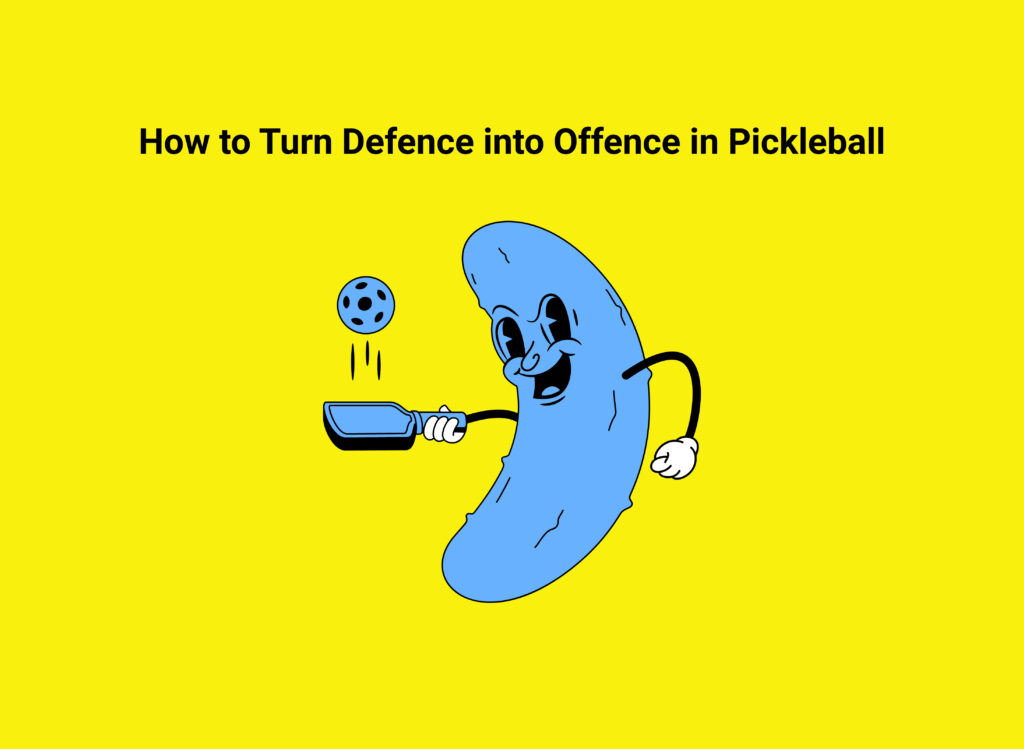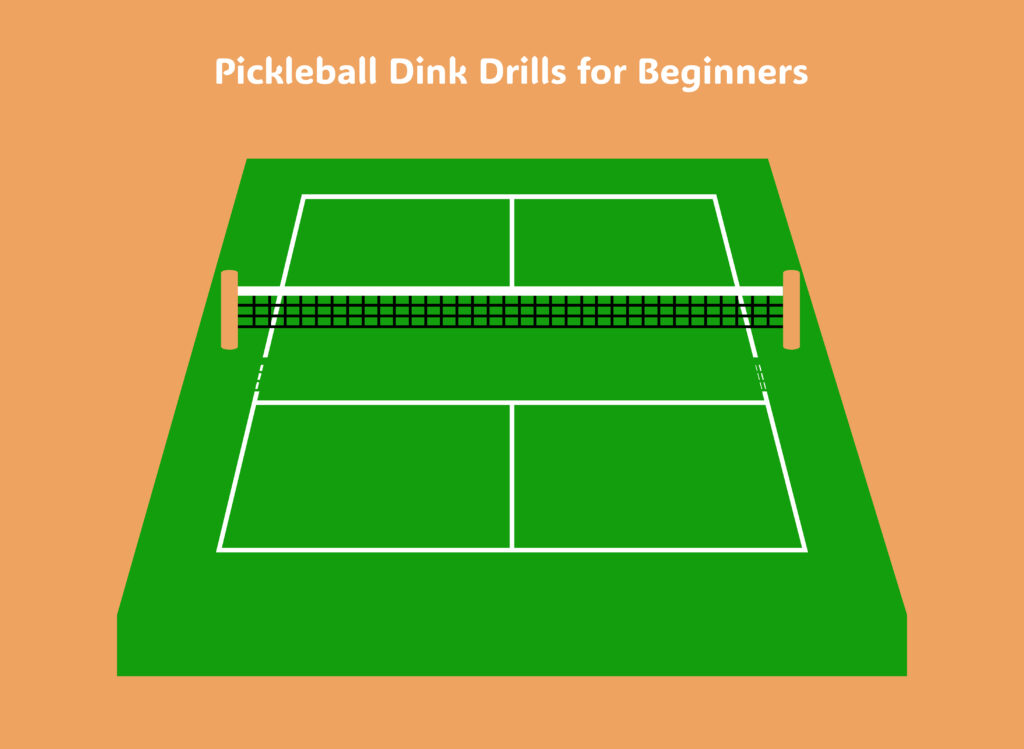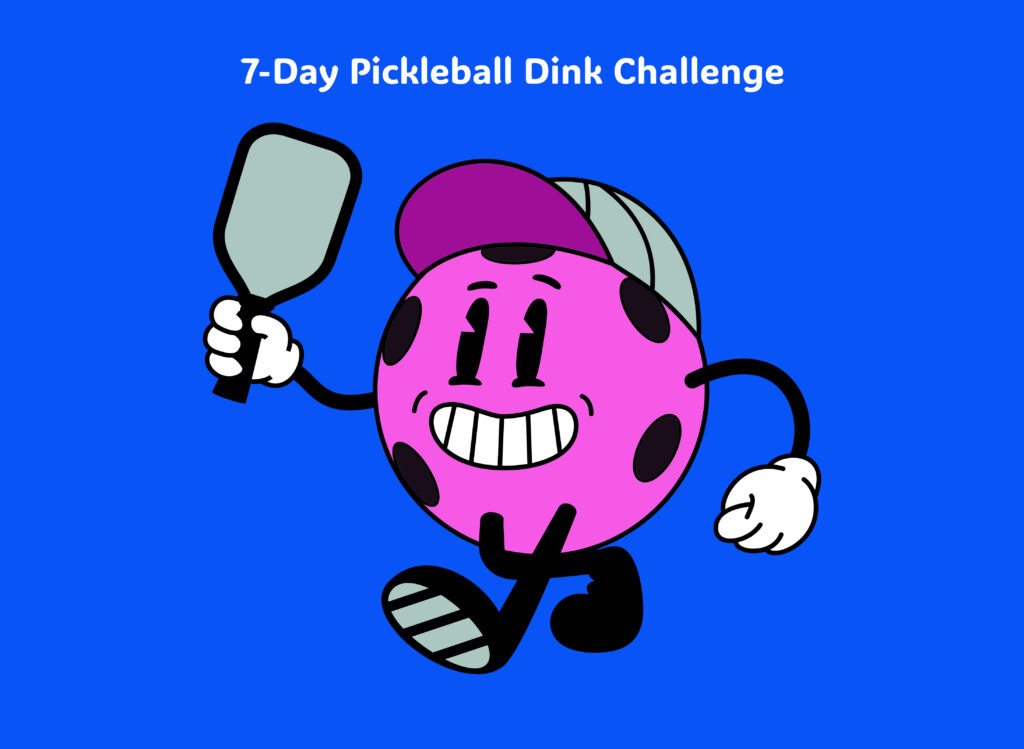- Turn Defence into Offence in Pickleball
- Turning Defence into Offence as a Beginner: Reset, Recover, Reclaim
- Intermediate Players: Using Transitions and Pressure to Flip the Rally
- Advanced Play: Tactical Baiting and Dynamic Counterattacks
- Training to Transition from Defence to Offence
- Final Thoughts: Defence Isn’t Survival—It’s Strategy
Turn Defence into Offence in Pickleball
Turning defence into offence is what separates solid players from smart, strategic ones. One of the most exciting aspects of pickleball especially at competitive levels is how quickly the game can flip. You can go from being pinned back, scrambling to reset, to suddenly controlling the point with a sharp counter or smart dink.
In UK pickleball, where rallies tend to be fast, compact, and often played indoors, this skill is absolutely critical. Whether you’re reacting to a hard drive or dealing with pressure at the baseline, your ability to stay calm, reset, and flip the momentum is what keeps you in control.
Defensive play doesn’t mean passive play. It means holding your ground, absorbing pressure, and setting yourself up to retake the Kitchen or force an error. The best players don’t just “survive” in defence—they use it to bait opponents, wear them down, and then strike when the opportunity opens up. And the good news is, this tactical shift is something players at every level in the UK can learn and practise.
Turning Defence into Offence as a Beginner: Reset, Recover, Reclaim
For beginners, defence usually feels reactive—scrambling to return a shot, lunging to keep the ball alive, hoping for a mistake from the other side. But learning to reset the point properly is your first step towards turning defence into offence. A good reset doesn’t win you the point, but it buys you time, slows things down, and helps you move forward from a pressured position.
Defensive skills beginners need to develop:
✔ Soft resets from the transition zone—let the ball drop, open your paddle, and guide it gently into the Kitchen.
✔ Stay low and bend your knees—don’t just reach or flick.
✔ Focus on high-percentage shots, not desperation slaps.
✔ Practise moving forward after each reset, rather than watching the ball.
✔ Avoid over-swinging—defence is about control, not power.
In many UK clubs, beginners often treat resets as last-resort shots, but in truth, they’re the gateway to offence. Once you’ve successfully reset, your opponent is less likely to attack. That’s your chance to take a step forward, reclaim Kitchen space, and re-engage on your terms.
🔥 Key takeaway: Beginners should see resets as a pathway, not a retreat—one calm shot can turn pressure into opportunity.
Intermediate Players: Using Transitions and Pressure to Flip the Rally
At intermediate level, most players can hit dinks and drops consistently—but many still struggle to transition smoothly under pressure. You may reset a few balls, but then rush forward or float one too high, giving up your position again. Learning to transition deliberately and counter attack at the right time is how you start turning defence into offence by design, not by chance.
Tactics to shift momentum mid-rally:
✔ Practise drop volleys and low blocks from mid-court—your paddle stays out front, and your body stays balanced.
✔ Use resets to regain the line, then wait for a weak dink or pop-up before attacking.
✔ Learn to read body language and paddle angle—know when your opponent is off-balance.
✔ Hit controlled attacks to hips, feet, or the middle—not wild smashes.
✔ Work on split-stepping after every shot to be ready to counter.
In UK pickleball, especially in doubles, intermediate games often have long Kitchen exchanges and fast pace. The players who can slow things down during defensive moments, regain their footing, and then choose when to strike will almost always outlast those who rush to finish too early.
🔥 Key takeaway: Intermediate players should focus on strategic resets, smart movement, and timely counters to flip rallies in their favour.
Advanced Play: Tactical Baiting and Dynamic Counterattacks
For advanced players, defence is often intentional and strategic. You’re not just trying to get out of trouble—you’re inviting it, setting traps, and waiting for your opponent to overcommit. At this level, switching from defence to offence happens within a few shots, often off the back of a clever reset, a flick volley, or a disguised speed-up. And the best players know how to turn pressure into opportunity in a split second.
High-level strategies to turn the tide:
✔ Use spin and misdirection on resets to disrupt rhythm and open up angles.
✔ Play soft when your opponent expects power, and speed up when they’re off guard.
✔ Mix in deceptive flicks from below the net line—these catch players on their heels.
✔ Work on volleying from low positions—turn defensive body shape into attacking leverage.
✔ Practise “slow-fast-slow” sequences—reset, counter, then soften again to reset their position.
Top UK players and tournament regulars often dominate not with raw power but with patience, disguise, and calmness under fire. When they’re under pressure, they absorb it, move their feet, stay compact, and flip the rally when the opponent gets greedy. They choose the moment—they don’t just react to it.
🔥 Key takeaway: Advanced players use defence as a setup—resetting with intent, reading patterns, and launching precise counters when the timing is right.
Training to Transition from Defence to Offence
Making this tactical shift requires more than theory—it takes intentional training. Across the UK, many clubs now include transition drills in group sessions and coaching clinics, helping players practise moving from the baseline to the Kitchen with control.
Top drills to build this skill:
✔ Reset-to-attack drills – Start deep, hit a drop or reset, move forward, and volley a follow-up ball.
✔ Pressure drills – One player feeds aggressive drives while the other practises softening them into the Kitchen.
✔ Footwork ladders – Combine movement patterns with shot control to simulate real match flow.
✔ Counter-attack sparring – Practise staying in a defensive posture until the perfect counter opportunity opens.
✔ Drop volley drills – From the transition zone, take pace off incoming shots and place them low in the Kitchen.
The more you train this transition, the more automatic it becomes. Eventually, you’ll stop seeing defence as a crisis and start recognising it as a strategic opportunity. You’ll stay calm when others panic, and that’s where the real wins come from.
🔥 Key takeaway: The transition from defence to offence is a skill you build with reps—train it specifically, and it becomes a natural part of your game.
Final Thoughts: Defence Isn’t Survival—It’s Strategy
In pickleball, turning defence into offence isn’t about desperation—it’s about decision-making. Whether you’re a beginner learning resets, an intermediate learning timing, or an advanced player setting traps, the shift from reactive to proactive is what elevates your game. It’s the moment when you stop surviving and start taking control.
Key Takeaways:
✔ Beginners should use resets to calm rallies and regain court position.
✔ Intermediate players need to link resets with forward movement and smart counters.
✔ Advanced players create pressure through baiting, spin, and timing.
✔ Defence is never passive—it’s a springboard to offence if played with purpose.
✔ In UK pickleball, control and composure are the real power moves.
👀 Enjoyed this read? Fancy levelling up your game even more? Keep reading Dink Quest for the best pickleball tips, drills, and news in the UK!
🎯 Check out these popular posts next:
📬 Subscribe to the Dink Quest newsletter to Stay in the Loop and be the first to get new blog posts, UK pickleball news, tips, player spotlights and exclusive offers
👉 Click here to subscribe now
Get discounts and exclusive offers for Paddles, clothing and accessories from our shop
We’ve got plenty more where that came from! Whether you’re working on your third shot drop, curious about dinking strategies, or just figuring out how to hold your paddle without it flying across the court we’ve got you covered.
👉 Keep reading, keep learning, and keep dinking smart. Let’s grow the game together, one dink at a time. 💚
See you on the court!
The Dinkquest Team UK 🏓



